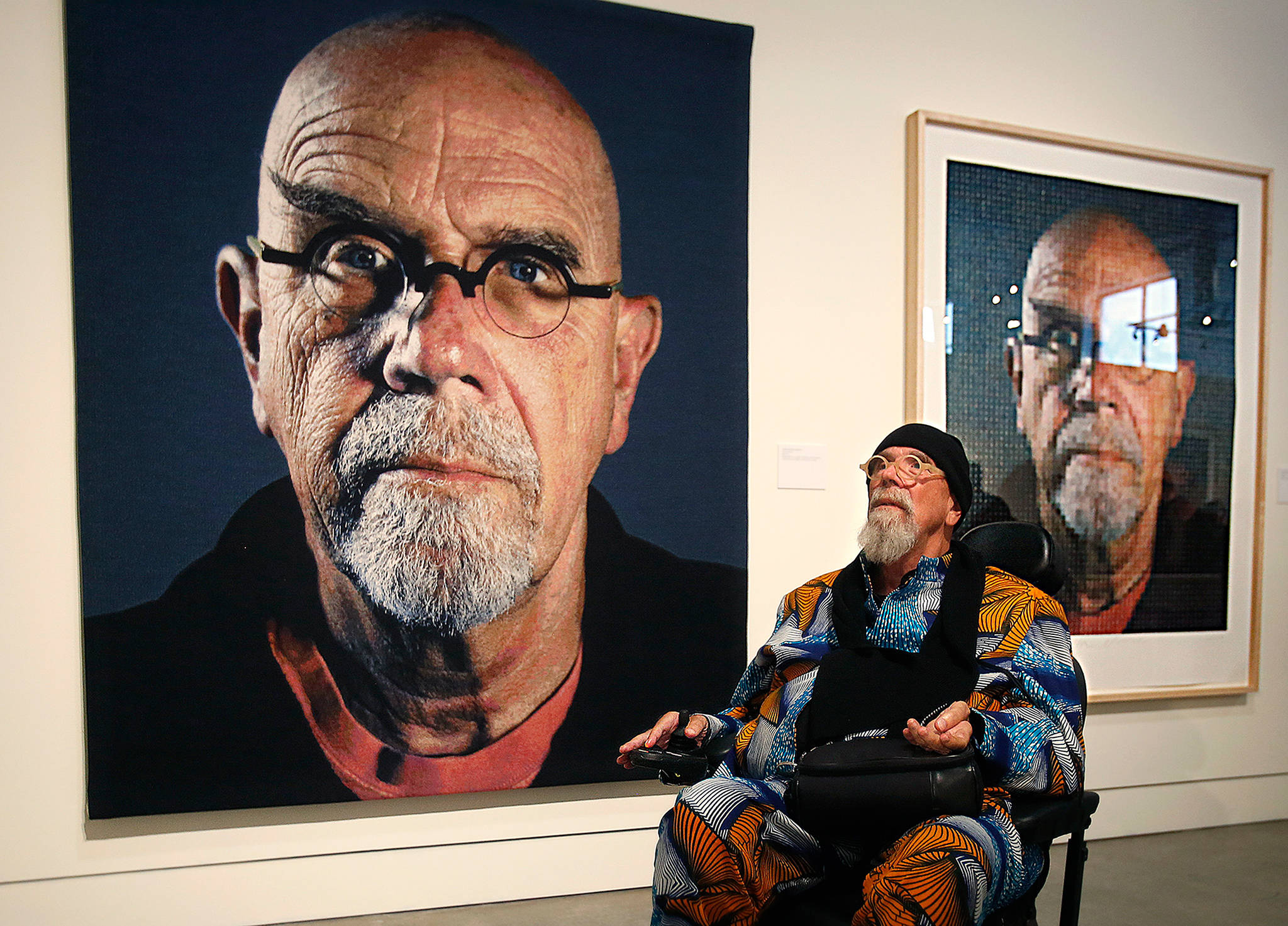
Chuck Close was a visionary American artist who left an indelible mark on the world of contemporary art with his innovative approach to portraiture. Known for his large-scale photorealistic portraits, Chuck Close redefined the boundaries of realism and abstraction in his quest to capture the essence of his subjects. This article delves into the life and artistic journey of Chuck Close, his evolution as an artist and the controversies that marked his last years.
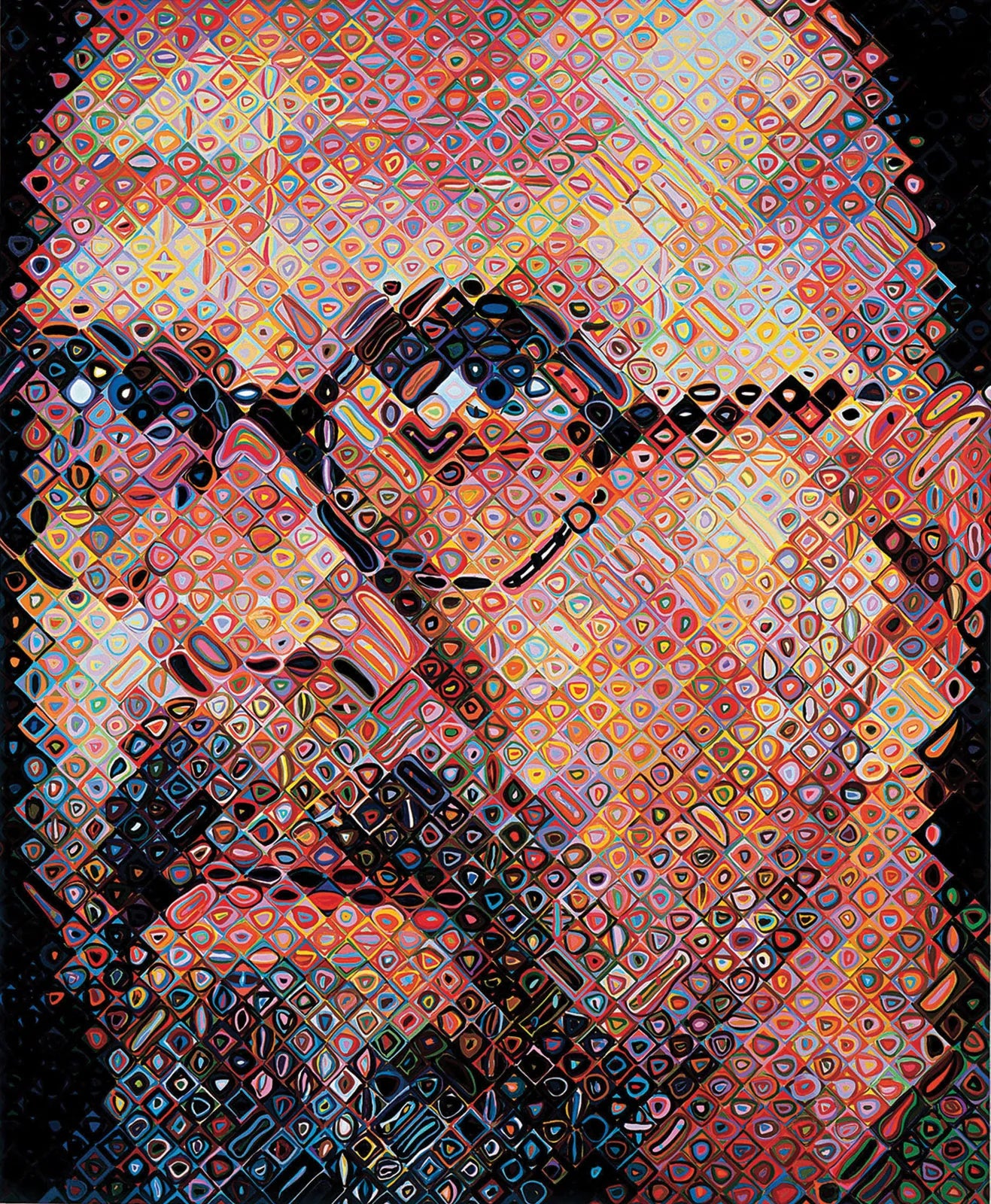
What was Chuck Close's artistic journey?
Beginnings and Influences (1960s): Chuck Close was born in 1940 in Washington, United States. He studied art at the University of Washington and then at Yale University, where he graduated with a Master of Fine Arts in 1964. He was initially influenced by the style of Abstract Expressionism, in particular, by the artists Willem de Kooning and Arshile Gorky.
Transition to Realism (End of the 1960s): After returning from a Fulbright fellowship in Vienna, Austria, in 1965, Chuck Close began to transition from an abstract style to realism. He began creating highly detailed black and white portraits based on photographs, using an airbrush and diluted black paint. His work "Big Nude" (1967) is a notable example of this phase.
Photorealistic Portraits (1970s): In the 1970s, Chuck Close continued to improve his technique and added color to his paintings. He developed a process in which he applied separate layers of red, yellow and blue paint to create colorful portraits with a remarkable photographic likeness.
Use of Grids (1970s onwards): A distinctive feature of Chuck Close's work is his use of a grid to divide his canvas into small squares. Each square corresponds to a cell in the reference photograph. This allowed Chuck Close to reproduce minute details and achieve incredible precision in his works.
Expansion of Themes and Style (1980s onwards): After an incident left him paralyzed in 1988, Chuck Close adapted his technique, working with a paintbrush strapped to his wrist. He expanded his subjects to include not only portraits of friends and family, but also notable artists such as Cindy Sherman, Kara Walker, and even former President Bill Clinton.
Multimedia Exploration (1990s onwards): Chuck Close didn't limit himself to painting. He explored various forms of art, including photography, drawing, collage and tapestry. His tapestries, in particular, represent a new challenge and means of expression.
Controversies (2010s): At the end of his career, Chuck Close faced accusations of sexual harassment from several women who had posed for the artist. This news has created debates about whether art can be separated from the conduct of the artist. Some art institutions have postponed exhibitions of his work in response to the accusations.
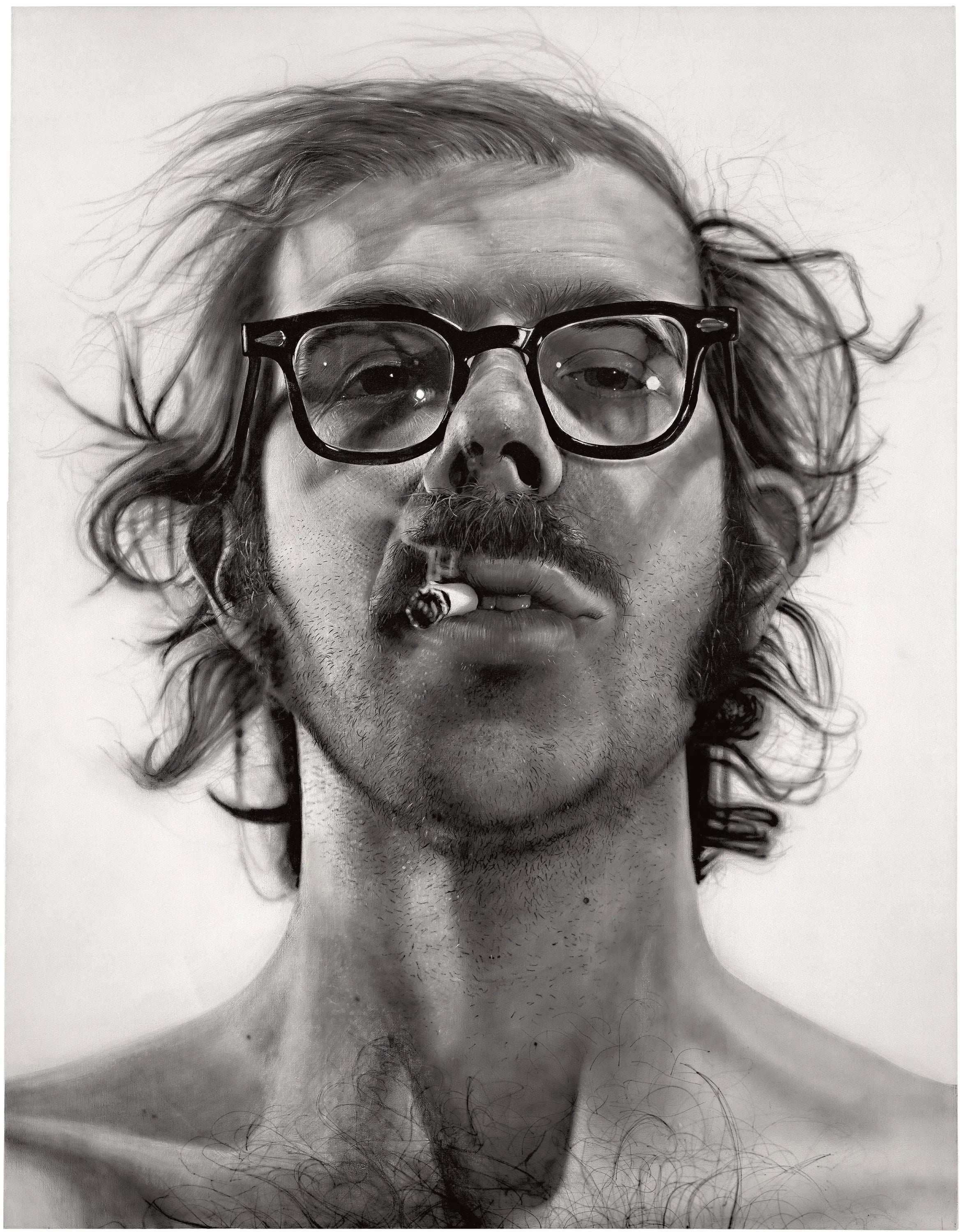
What are the characteristics of Chuck Close's works?
Photo-realism: The most prominent feature of Chuck Close's works is photorealism. His paintings are so detailed and precise that, at first glance, they can easily be mistaken for photographs. It meticulously captures the facial details of its subjects, including wrinkles, pores, hair and freckles.
Use of Grids: Chuck Close uses a grid to divide your screen into small squares or cells. Each cell corresponds to a point on the reference photograph. This technique allows the meticulous reproduction of every detail of the image, contributing to the precision of photorealism in your works.
Modular Approach: Rather than painting the portrait as a whole, Chuck Close takes a modular approach, working one cell at a time. This technique allows him to focus intensely on each area of the image while maintaining overall cohesion as he progresses.
Variety of techniques and Monumental Size: Although he is best known for his oil paintings, Chuck Close has explored a variety of techniques throughout his career. This includes photography, drawing, collage, printing and even tapestry. Each medium allowed him a unique expression of his style. Many of Chuck Close's works are monumental in size. His paintings depict faces on a scale that can be imposing when seen in person. This amplifies the viewer's visual experience and further highlights the precision of its details.
Evolution and Challenges to the Artistic Convention: Throughout his career, Chuck Close went from painting in black and white to color, experimented with different techniques and materials and adapted his style after an incident that left him paralyzed. This ability to evolve artistically is a distinctive feature of his work. Chuck Close constantly challenged artistic conventions and explored new creative territories. His tapestries, for example, represented a significant challenge to traditional forms of painting.
Legacy and Impact: Chuck Close's work has had a lasting impact on contemporary art. He is considered one of the leading photorealist artists of the 20th century and is praised for his innovation in fusing technical precision with a conceptual approach.
Chuck Close's works are a testament to the artist's exceptional technical skill and ability to challenge the boundaries of visual representation.
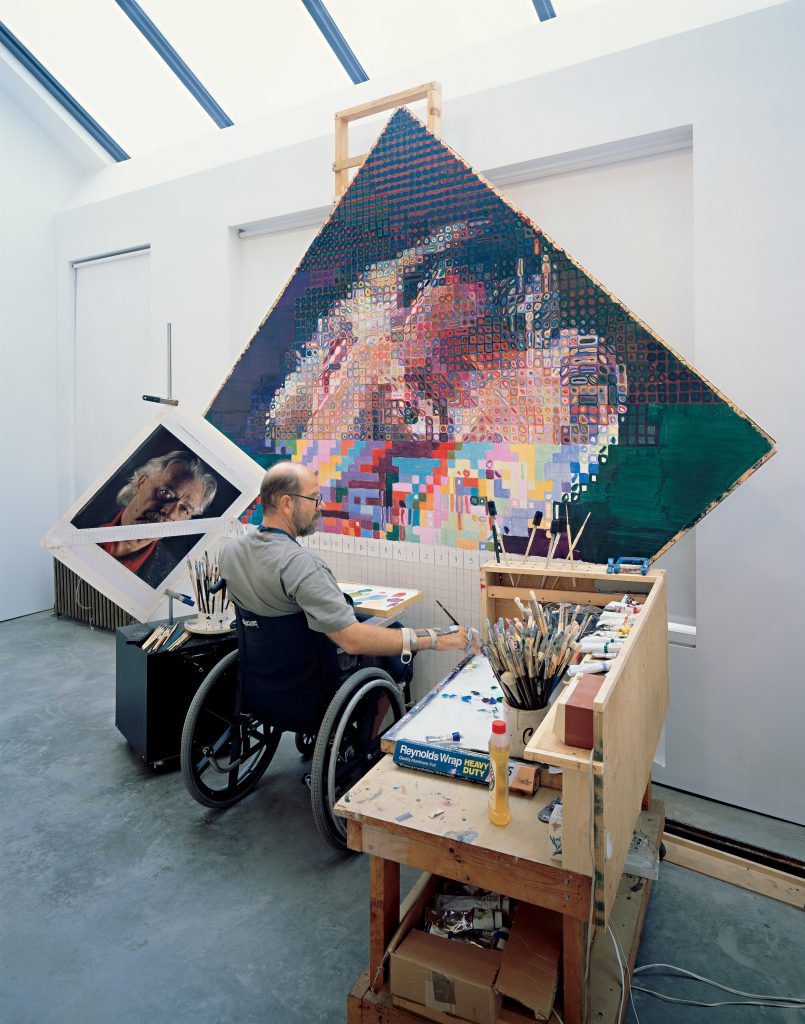
What are some of Chuck Close's most famous works?
"Big Self-Portrait" (1967-1968): This is one of Chuck Close's most iconic works and marked his transition from abstract style to photo-realism. It is a monumental black and white painting by Chuck Close that captures with photographic precision his facial details, including his disheveled hair and stubble. It is considered one of the pioneering works of photorealism.
"Fanny/Fingerpainting" (1985): This painting is a stunning example of Chuck Close's technical skill following the incident that left him paralyzed. He used his digital printing technique to create this work, demonstrating his creative adaptation to physical limitations. The painting is highly detailed and colorful, with a sense of energy and vitality.
"Self-Portrait" (2000): This is one of Chuck Close's most recognizable works in his later years. After his paralysis, Chuck Close continued to produce self-portraits, and this is a notable example. It incorporates a more abstract and exuberant style, with bold colors and brushstrokes that distinguish it from his previous works.
"Lucas" (1986): This is one of Chuck Close's iconic works that demonstrates his masterful use of the grid. The painting is a detailed representation of the face of Lucas Samaras, another contemporary artist. Up close, the individual grid cells are clearly visible, but as you move away, the image merges into a highly realistic representation.
"Keith/Mezzotint" (1972): This mezzotint is an example of Chuck Close's mastery of different printing techniques. Mezzotint is a complex technique that involves meticulously creating a tonal matrix. The work depicts his friend and fellow artist Keith Hollingworth and is a notable example of his multifaceted approach to art.
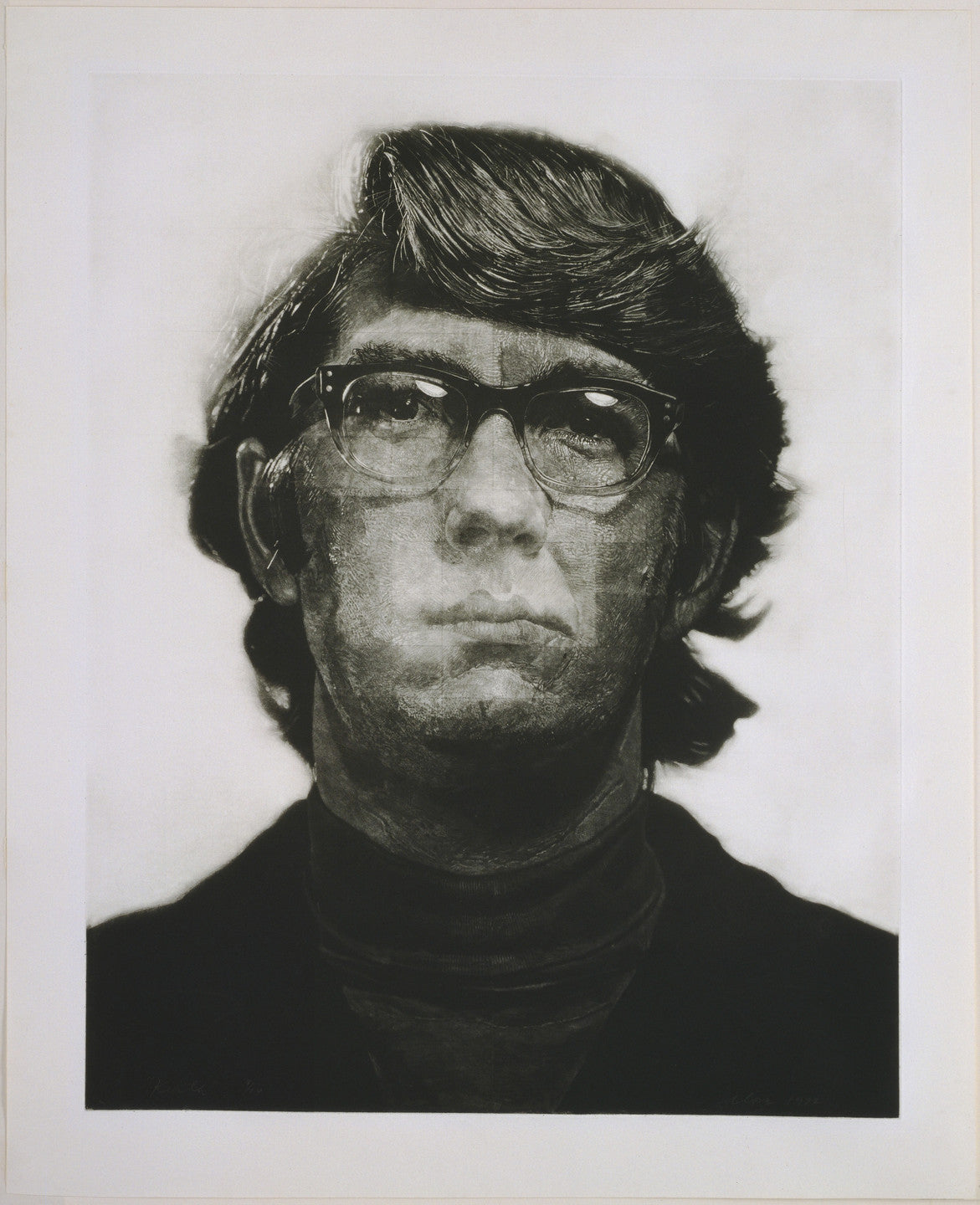
In addition to portraits, what other themes or techniques did Chuck Close explore in his art?
Although Chuck Close is best known for his detailed, photorealistic portraits, he has also explored other themes and techniques throughout his artistic career. Here are some of the areas in which Chuck Close expanded his artistic expression:
Dead nature: Chuck Close created some still life works throughout his career. His still lifes share the same meticulous attention to detail and grid technique that is characteristic of his work.
Collages: Chuck Close experimented with collages at various stages of his career. He used a variety of materials, such as paper, coins and even videotape, to create collages that maintain his detailed approach and distinctive color palette.
Engravings: In addition to painting, Chuck Close also ventured into printmaking, producing a series of prints in different techniques, such as etching and mezzotint. These engravings demonstrate his versatility in mastering various techniques.
Photography and Daguerreotypes: Chuck Close didn't limit himself to traditional painting, he also explored photography, including daguerreotypes. He experimented with different camera techniques and produced a series of photographic portraits.
Tapestry: One of Chuck Close's most surprising areas of exploration was tapestry. He created tapestries based on his paintings, expanding his work into a three-dimensional medium. These tapestries capture the essence of his paintings in a unique format.
Abstract painting: Although he is best known for his photorealism, Chuck Close also experimented with abstract painting. He incorporated more abstract elements into his works, including bold brushstrokes and vibrant colors.
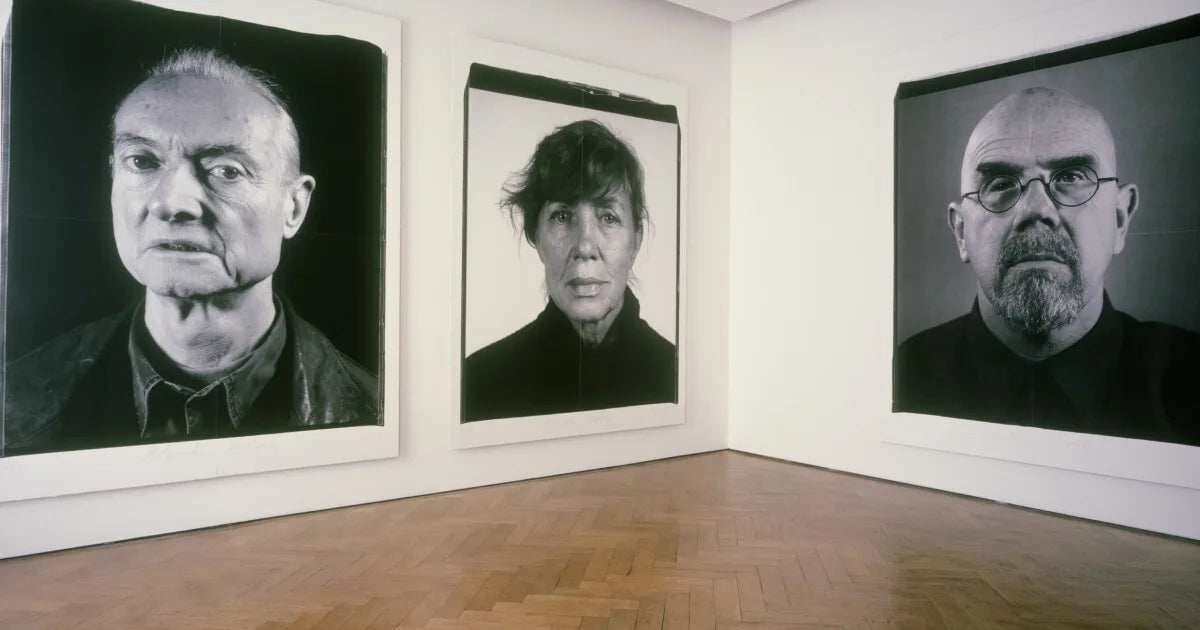
How has Chuck Close's technique evolved throughout his career, especially after the incident that left him paralyzed?
Chuck Close's technique has undergone several significant evolutions throughout his career, including notable changes following the incident that left him paralyzed in 1988. Here is an overview of the evolution of his technique:
Before the Incident:
In the early stages of his career, Chuck Close explored abstract expressionism, influenced by artists such as Willem de Kooning. He produced paintings that were abstract and biomorphic, before transitioning to highly detailed black and white portraits in the photorealist style. Chuck Close developed his grid technique during this period, dividing the screen into small cells and meticulously reproducing every detail of the reference image.
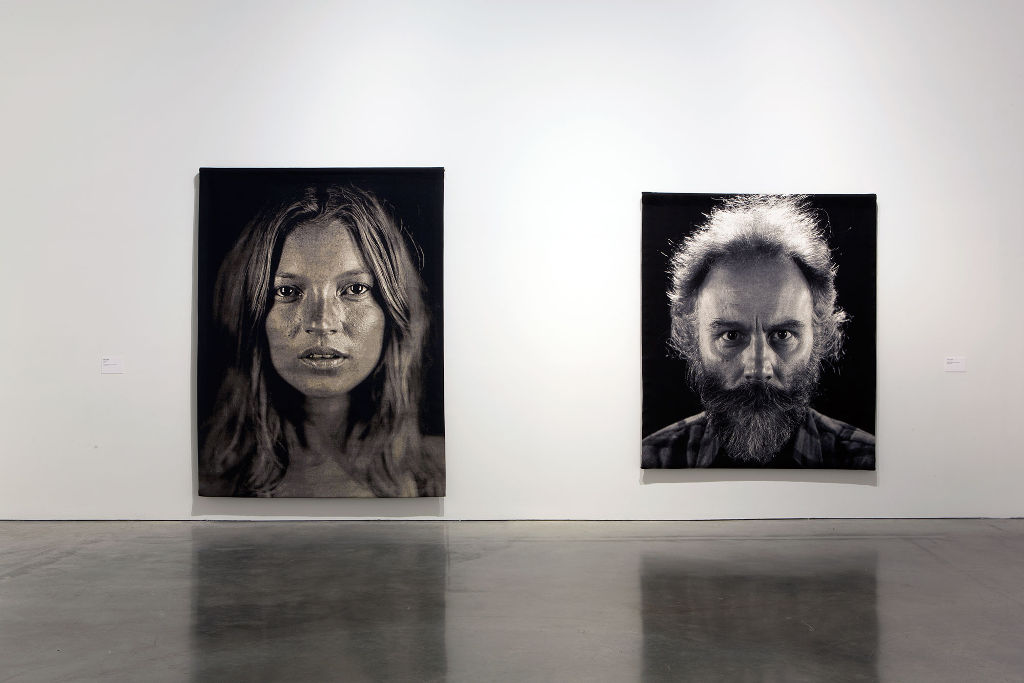
After the Incident (1988 onwards):
In 1988, Chuck Close suffered a collapsed artery in his spinal cord that left him paralyzed from the neck down. This dramatic event had a profound impact on his art and the way he approached his artistic practice. Although his mobility was severely compromised, Chuck Close was determined to continue painting. He developed an innovative method using an attachment device with brushes attached to his wrist to create his works. With the use of the fixture, Chuck Close continued to create highly detailed portraits, but his technique underwent some notable changes. His brushwork became more visible and his paintings began to display a more abstract and expressive style, with bold colors and vibrant brushstrokes. Chuck Close also began experimenting with other mediums, such as tapestry and mezzotint, adapting his approach to suit these formats.
Transition to Abstract (Later Years):
Later in his career, Chuck Close adopted a more abstract approach to his art. His works began to incorporate elements of abstraction, including bold brushstrokes and vibrant colors. Despite the shift towards abstraction, his works maintained an attention to texture and surface, creating an interesting tension between realism and abstraction. Chuck Close continued to produce self-portraits during this period, exploring the evolution of his own identity and the changes in his technique and style over the years.
The evolution in Chuck Close's technique after the incident that left him paralyzed demonstrates his resilience, adaptability and creativity. His willingness to experiment with new approaches and mediums has contributed to his continued relevance in the contemporary art scene, making him one of the most influential artists of the 20th century and beyond.
